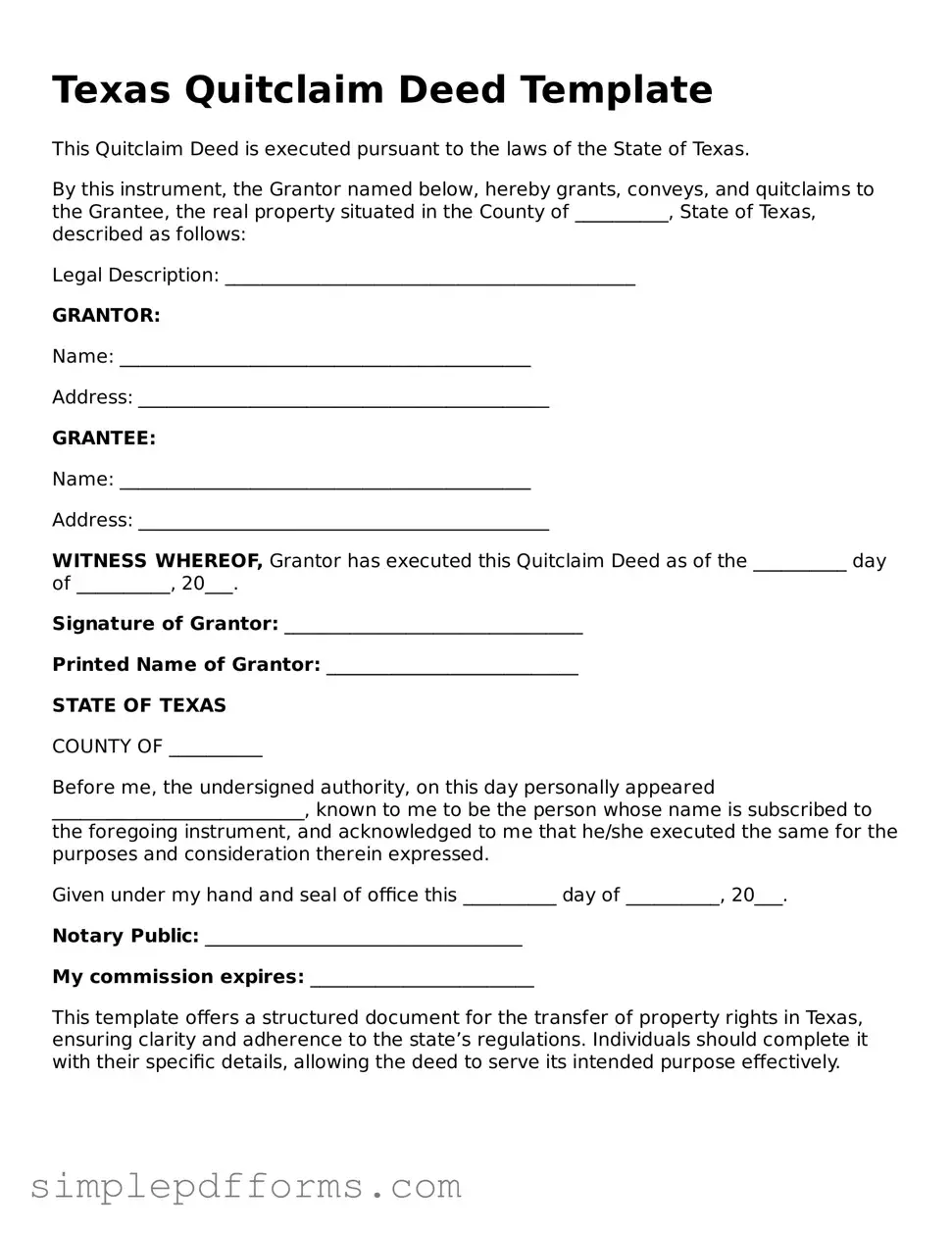Texas Quitclaim Deed Template
This Quitclaim Deed is executed pursuant to the laws of the State of Texas.
By this instrument, the Grantor named below, hereby grants, conveys, and quitclaims to the Grantee, the real property situated in the County of __________, State of Texas, described as follows:
Legal Description: ____________________________________________
GRANTOR:
Name: ____________________________________________
Address: ____________________________________________
GRANTEE:
Name: ____________________________________________
Address: ____________________________________________
WITNESS WHEREOF, Grantor has executed this Quitclaim Deed as of the __________ day of __________, 20___.
Signature of Grantor: ________________________________
Printed Name of Grantor: ___________________________
STATE OF TEXAS
COUNTY OF __________
Before me, the undersigned authority, on this day personally appeared ___________________________, known to me to be the person whose name is subscribed to the foregoing instrument, and acknowledged to me that he/she executed the same for the purposes and consideration therein expressed.
Given under my hand and seal of office this __________ day of __________, 20___.
Notary Public: __________________________________
My commission expires: ________________________
This template offers a structured document for the transfer of property rights in Texas, ensuring clarity and adherence to the state’s regulations. Individuals should complete it with their specific details, allowing the deed to serve its intended purpose effectively.
